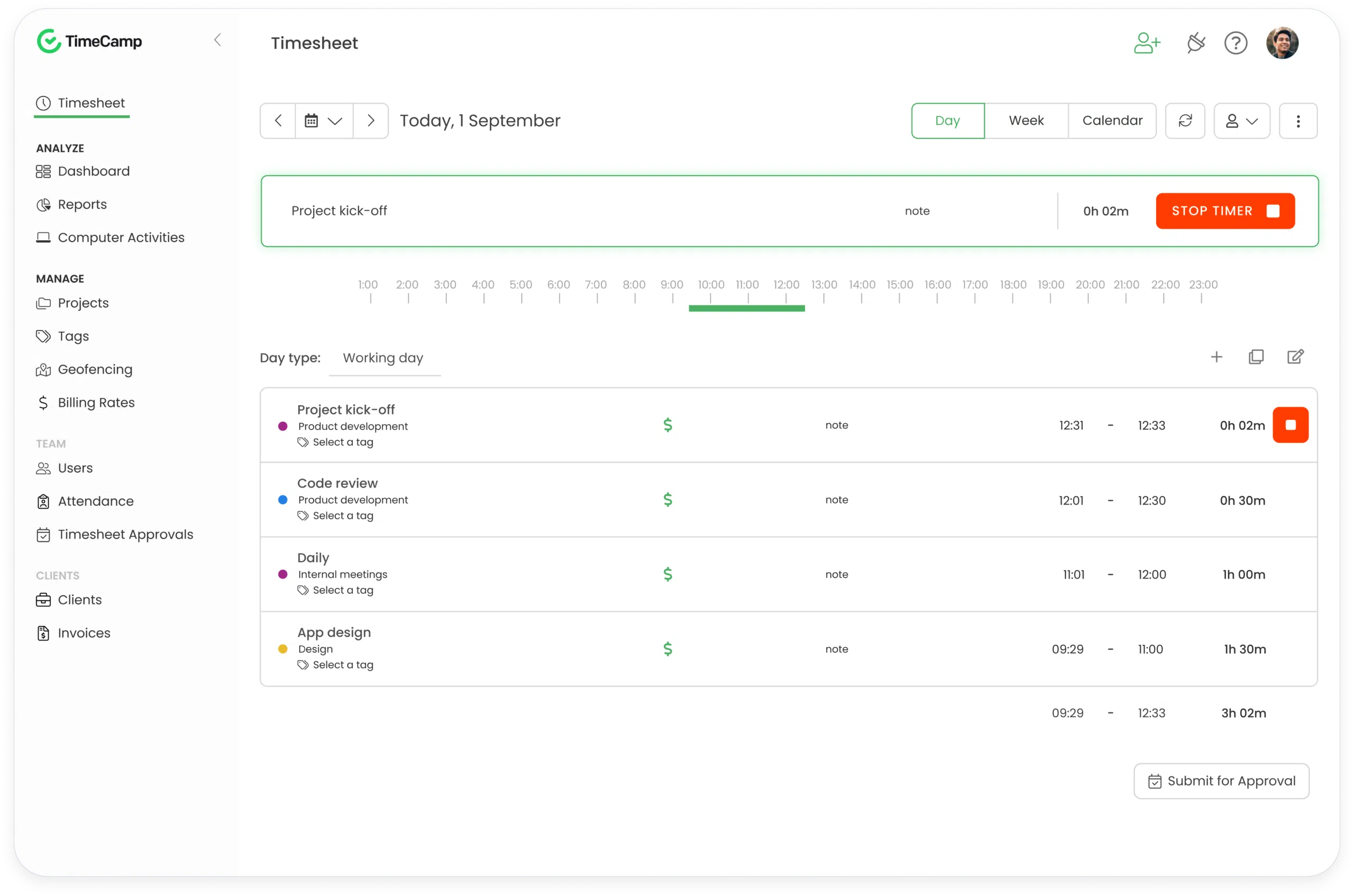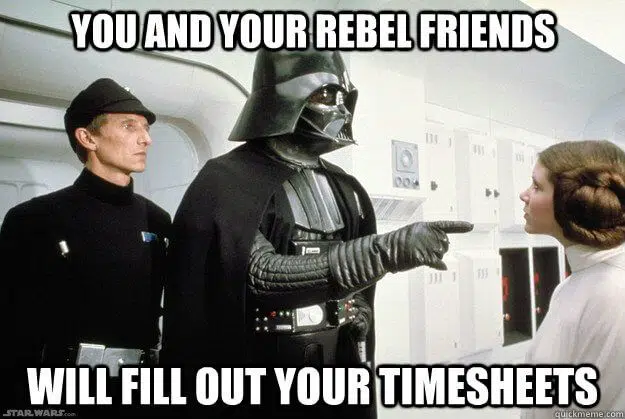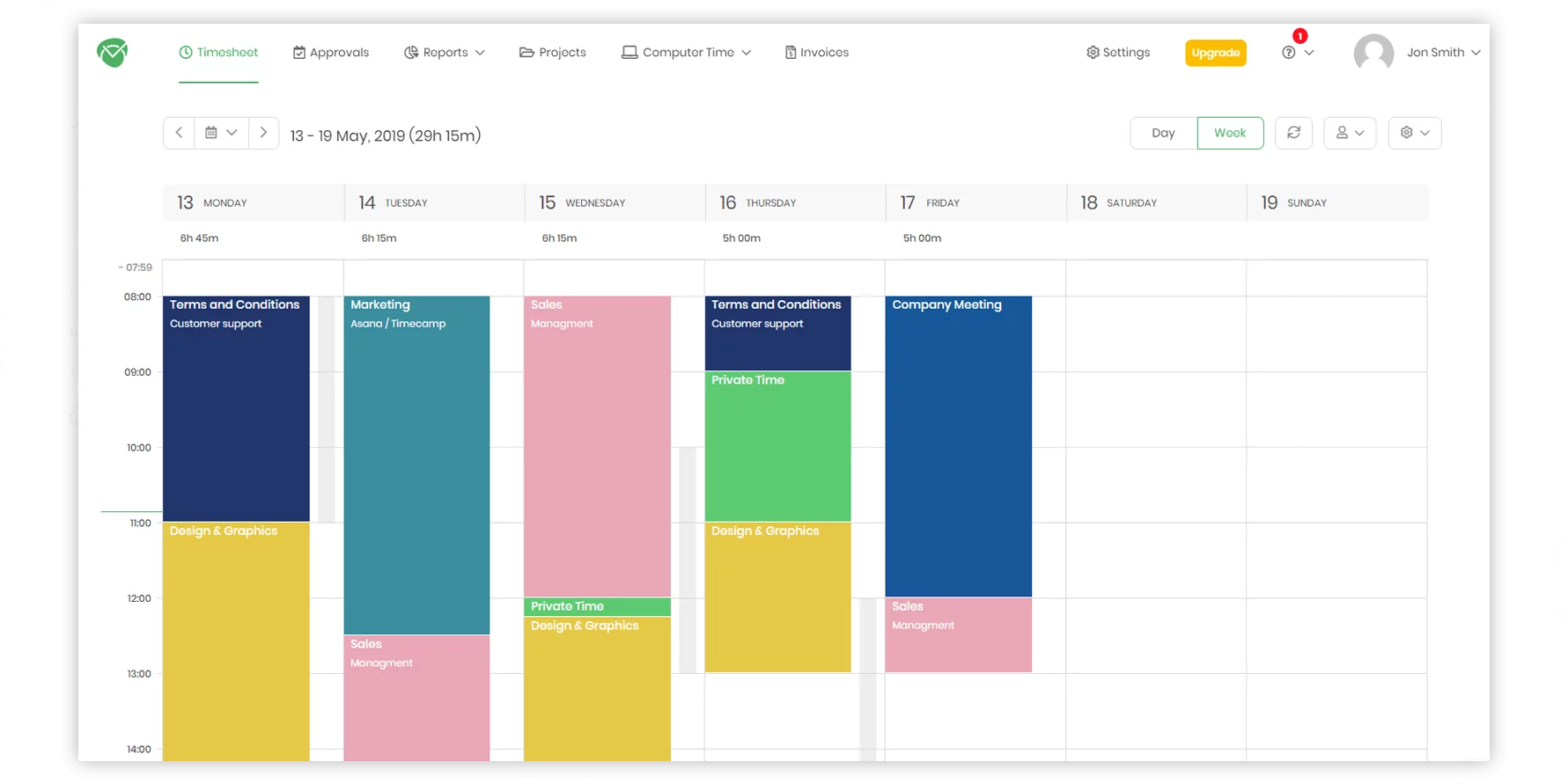How to Make Your Employees Actually Fill out Timesheets
-
Kate Borucka
- February 28, 2024
- 8 min read

How to fill out timesheets so your employees spend as little time on it as possible? How to make employee timesheets a natural part of your project management? Here’s your short guide with a few tips and tools.
[ez-toc]
Let’s Talk About Timesheets
“I love timesheets!” said no one ever. Because filling them is boring, time-consuming, and people treat it as a punishment. The tricky part is to make employees realize that filling out a timesheet is actually a very important element of their job.
Many of our clients reach out to us with the problem of employees not filling in their timesheets. It’s a very common issue that various organizations have to confront.
Very often, it is an unwanted work duty. It’s impossible to find a person who would say that it’s not problematic and it’s just a task as many others. People fill in timesheets negligibly and they don’t pay enough attention to it. Hence, the problem of accuracy arises, which then, may cause even more difficulties in the project or even the whole organization.
How to make your employees actually feel out their timesheets? It’s a question that is a nightmare to most leaders, project managers, heads of departments, and all the people who manage staff members. However, TimeCamp offers a couple of solutions for easy timesheet implementation. You can either use them solo or all together for more accurate results.
Why Use Time Tracking Tools for Timesheets?
A well-established time tracking process can help you successfully track each employee’s work hours. As a result, you’ll have accurate insights into resource allocation and project management.
Here are all the reasons why it’s worth using dedicated software for employee timesheets:
- Better employee timesheet management: you don’t have to use paper timesheets, online timesheet software lets you store everything in one place, easily access all the information, and stay legally compliant.
- Convenient for tracking the working hours of hourly employees.
- Improved payroll processing by accurately recording the hours worked by employees, ensuring precise calculation of wages, and preventing errors in compensation.
- Accurate timesheet data eliminates human error and lessens the probability of mistakes.
- Helps to save money by providing insights into how time is spent, allowing for better resource allocation, productivity improvements, and the identification of inefficient processes or tasks.
- Work automation: time tracking optimizes repetitive and tedious activities.
- Track project costs and expenses automatically so you can base your timesheets on proven data and financial reports.
- Creates complete timesheets with all the important information. No manual work.
- Bill clients accurately and get paid correctly.
- Improves employee productivity. Many timesheeting software helps to measure employee performance.
When you use time tracking software for timesheets, you get a fully-filled, professional timetable with all the details you like.
Types of Timesheets
You can choose from various types of timesheets, depending on your needs and preferences. Here are the most common types of time records:
Day Timesheet
The daily timesheet is a fundamental tool in time tracking. It typically has a straightforward table format where each row denotes a specific time entry, either logged manually or through a timer.
Daily hourly timesheets are the most common. Such a timesheet offers a granular perspective on time usage throughout the day. It breaks down each day into hourly segments, allowing for meticulous tracking of activities and tasks. Additionally, it helps to identify productivity patterns, and potential bottlenecks in the workflow, and pinpoint peak hours of performance.
Weekly Timesheets
This is a weekly timesheet, a calendar-like way to track time spent on work. This type of view allows your employees to quickly and easily add time for a specific timeframe during the desired day by adding entries.
A weekly timesheet gives you a quick insight into your employees’ workflow, lets you see the billable and non-billable hours, and easily schedule and manage time and attendance. It helps to get a picture of how many hours your employees work.
Bi-weekly Timesheets
Similar to the weekly counterpart, the bi-weekly timesheet offers a broader timeframe, covering two weeks at a time. This format provides flexibility while ensuring meticulous time recording.
Monthly Timesheets
Monthly timesheets offer a holistic overview of time utilization throughout an entire month. They streamline the tracking process and offer insights into long-term productivity trends.
Graphical Timesheet
A graphical timesheet presents time entries visually, using charts or graphs. It offers a quick overview of employees’ workflow, project progress, and resource allocation. By representing data visually, it facilitates trend identification, efficiency improvements, and data-driven decision-making.
Graphical timesheets categorize time entries by project, task, or employee, allowing for easy comparison and analysis. They enhance collaboration, communication, and transparency within teams, fostering a culture of accountability and efficiency.
Project Timesheets
Project timesheets focus on tracking time spent on specific projects or tasks. They enable businesses to allocate resources effectively and monitor project progress in real-time.
Flexibility in Filling Out Timesheets
One notable advantage of modern timesheet software, like TimeCamp, is the flexibility it offers in timesheet management. You can create detailed records encompassing not just work hours, but also expenditure on tasks and projects.
We have a whole section of our knowledge base dedicated to timesheets.
How to Fill Out a Timesheet Step-by-Step?
Although there’s no magic in filling out timesheets, sometimes it can be a real headache. If you’re using time tracking tool, you won’t find it problematic. Use this short guide as a checkup for your current timesheeting process.
Here’s how to fill out a timesheet to ensure all the data is accurate and you’re not missing anything.
1) Understand the Layout
Begin by familiarizing yourself with the structure of the timesheet. Which type of timesheet are you going to use? Daily timesheets, weekly or biweekly timesheets?
Identify the columns for dates, time in and out, total hours worked, and any relevant project or task codes. Make sure your timesheet includes everything you need.
2) Include Time Period
What date range will your timesheet cover?
Enter the date for each day you’re recording your work hours. Accuracy in recording dates is crucial for proper tracking and a smooth payroll process.
3) Record Time In and Out
For each workday, record the time you start and finish work. Be precise to the nearest quarter-hour or whatever increment your company uses.
Also, remember that if you’re using time tracking software, it will round your time entries automatically.
4) Calculate Hours Worked
Subtract your time in from your time out to calculate the total hours worked for each day. Remember to account for breaks or lunchtime if they’re not automatically deducted.
Apart from regular hours, include overtime hours, double time, multiple tasks, and other relevant employee hours spent on work-related activities. Your time lgos should cover all the data to precisely calculate work hours.
And it doesn’t matter whether you’re a salaried employee, a contractor, working part-time or on a freelance basis. You should be paid accurately for all your work hours.
5) Enter Project Details (if applicable)
If your timesheet requires you to allocate hours to specific projects or tasks, make sure to accurately input this information in the designated fields. Sometimes, you may also need to add notes or descriptions of tasks completed.
6) Review for Accuracy
Before submitting your timesheet, take a moment to review your entries. Double-check dates, hours worked, and project codes to ensure accuracy and completeness.
7) Obtain Necessary Approvals
If your company mandates supervisor approval for timesheets, ensure you secure the necessary electronic signature or digital approvals before submission.
8) Submit On Time
Adhere to the company’s deadlines for timesheet submission. Timely submission ensures payroll processing runs smoothly and avoids any delays in employee compensation.
With the right timesheet software, you can do it with just one click.
What Are the Best Tools to Fill Out a Timesheet?
Definitely, one of the best tools that can help you fill out a timesheet is time tracking software. Why? Because it’s fully automatic and collects all the data for you in online timesheets. At the same time, it helps to improve employee performance.
But you can choose from other available options. One of the most popular is Excel. Many business owners use Excel spreadsheets for creating time logs. However, for more complex project timesheets, you may need to be familiar with the more advanced Excel formulas.
Another helpful tool are timesheet templates. These are available online in many different formats (Excel, Microsoft Docs, PDF, Google Docs, and in graphical versions).
Here are a few links to helpful timesheet templates:
- Template library by TimeCamp including such timesheet templates like free schedule template, free printable timesheet template, employee attendance tracker template, and many more.
- Template library by TimeCamp Planner with numerous blueprints to choose from (including planning work hours, project timesheet options, etc.)
- Check also daily schedule templates and weekly schedule templates that can help you plan and organize your work.
Additionally, if you like fancy tools, you can opt for a Polygon -a physical time-tracking device such as Timeular or Timeflip. These, however, may require more manual work.
Another tool that can help you fill out a timesheet are calculators such as time card calculator, decimal hours calculator, overtime calculator, or use an online timer to calculate the exact time spent on work. Use them to calculate total hours and avoid inaccurate records.
How to Fill Out Timesheets With TimeCamp?
(Obviously, it would be a shame if we didn’t do a little self-promotion here.) TimeCamp is a time tracking software that allows you and your employees to fill in timesheets automatically. It tracks time spent on work and all activities and solves the complicated issues with timesheets that employees struggle with.
Here’s how it can help employees fill out timesheets:
- Automatic time tracking with the unintrusive app running in the background that gathers all the necessary timesheet records.
- Attendance tracking with different types of days (remote work, vacation, parental leave, different types of absence, holiday, sick leave, etc.) and comprehensive attendance reports.
- Project time tracking with billable hours worked, tasks completed, and project details.
- Expense tracking for monitoring work-related expenses and making sure you’re staying on track with your business money.
- Accurate records. Based on hours spent on work and different activities, TimeCamp will fill in your timesheet correctly so you can avoid “human error.”
- Timesheet management—TimeCamp allows editing timesheet entry, provides timesheet approvals with different user roles, and lets you choose from different timesheet views (daily timesheets, weekly timesheets with graphical view, monthly timesheets, annual timesheets, or your own custom range).
- All-platform accessibility: you can use TimeCamp applications—browser extension, desktop or mobile app for any platform and device.
- Integrations let you track time and import data from other apps if you need more granular data.
- GPS tracking with geofencing lets you submit timesheets for employees working in different locations or being on the move regularly.
TimeCamp replaces paper timesheets and helps your employees smartly and effectively manage their time.

Why Is It So Important to Fill Out Timesheets?
Employees don’t like to fill in timesheets because they’re not aware of their importance. Timesheets are necessary for a couple of reasons. They allow you to properly allocate time and resources, measure employees’ performance, and are helpful in managing payroll. And above all, they help to measure the planned project against the actual project in progress, including the budget.
But in order to be able to perform the above in the right manner, your employees have to fill in timesheets on a regular basis. It’s best if they do it every day. It’s then possible to keep a hand on all processes taking place in the company. The best part about it is that their work will become smooth and productive.
And so, to ensure that their daily routine is as effortless as possible, time tracking software with timesheets is a must. Hence, if they track their activities automatically, it’ll be much easier for them to monitor work, budget, project progress, and all activities. TimeCamp will create timesheets for them and they will find it easy and satisfying to generate timesheet reports which are already filled in.
But don’t forget that to make this process smooth and flawless, someone must be responsible for approving timesheets!
If such a person implements weekly or even daily timesheet approval, employees will become remarkably efficient. Reliable workforce forecasting software can further streamline this process by predicting future staffing needs and ensuring that all projects are adequately resourced.
And if things go well and the process of filling in timesheets is seamless, you may want to think about rewarding your employees. After all, when they feel appreciated, they are more willing to do their work.
Watch the video to see how easy it is to automatically create timesheet with TimeCamp!
To Wrap It Up
Now that you know how to fill out timesheets without effort, you can let your employees focus on their work and let a time tracking tool do the job.
Filling out timesheets doesn’t have to be bad. It can be a great means to motivating your team and keeping everyone productive. At the same time, it can also contribute to your company’s growth by eliminating boring and repetitive paperwork and thus, generating higher income.




